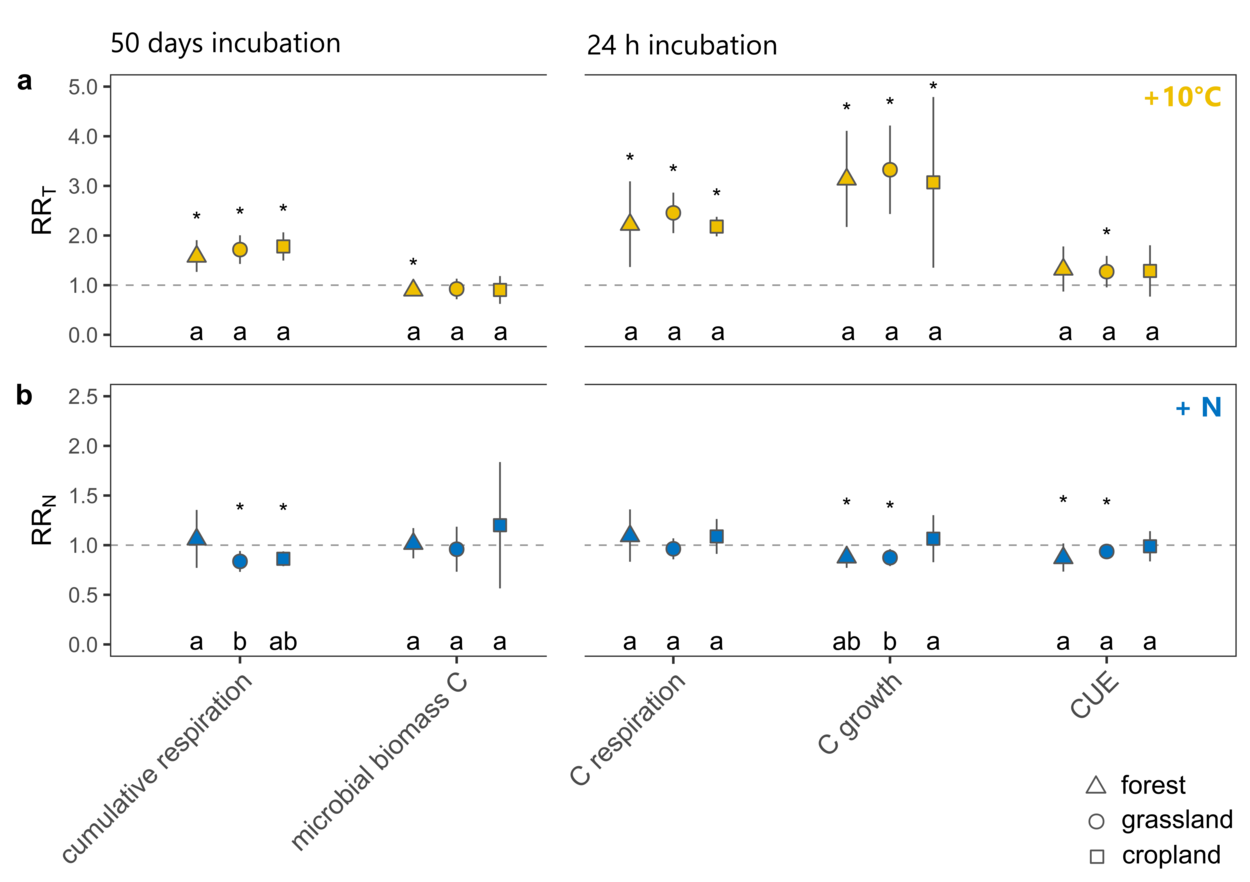Subarctic regions are particularly affected by global warming. As vegetation periods lengthen, boreal forests could gradually be converted into agricultural land. How land use alters the susceptibility of soil organic matter decomposition to rising temperatures or how changes in nutrient availability, such as nitrogen (N) fertilisation, affect carbon (C) cycling is unknown. Microbial carbon use efficiency (CUE) defines how much of the decomposed soil organic carbon is directed to growth or lost to the atmosphere. Here, we investigated the response of CUE (24 h) and soil organic matter decomposition (50 days) to + 10 °C warming and N addition in three subarctic soils derived from paired plots (forest, grassland, cropland) in the Yukon, Canada. Contrary to our literature-based expectations, boreal forest soils did not demonstrate the most sensitive response to warming and N addition. Temperature sensitivity was not affected by land-use type. In contrast to a generally assumed decline, short-term warming increased CUE by + 30%, which was positively correlated with microbial growth. N addition reduced overall CUE by − 7%, in contrast to the expectation that CUE would rise due to the alleviation of nutrient limitations. The response to N addition was negatively correlated with the ratio of fungi to bacteria, and presumably depended on the prevailing N-fertilisation regime. The temperature sensitivity of microbial metabolism was driven by site-specific parameters rather than by land-use type. Our results indicate that it may not be necessary to consider land use-specific temperature sensitivities when modelling soil organic carbon dynamics under future climate conditions.
Scroll to top

![[Translate to English:] [Translate to English:]](/media/_processed_/6/4/csm_titel_CO2Kampagne8_afeea2273e.png)
![[Translate to English:] [Translate to English:]](/media/_processed_/4/1/csm_titel_93px_CO2Kampagne8_9b0f3354d4.png)






